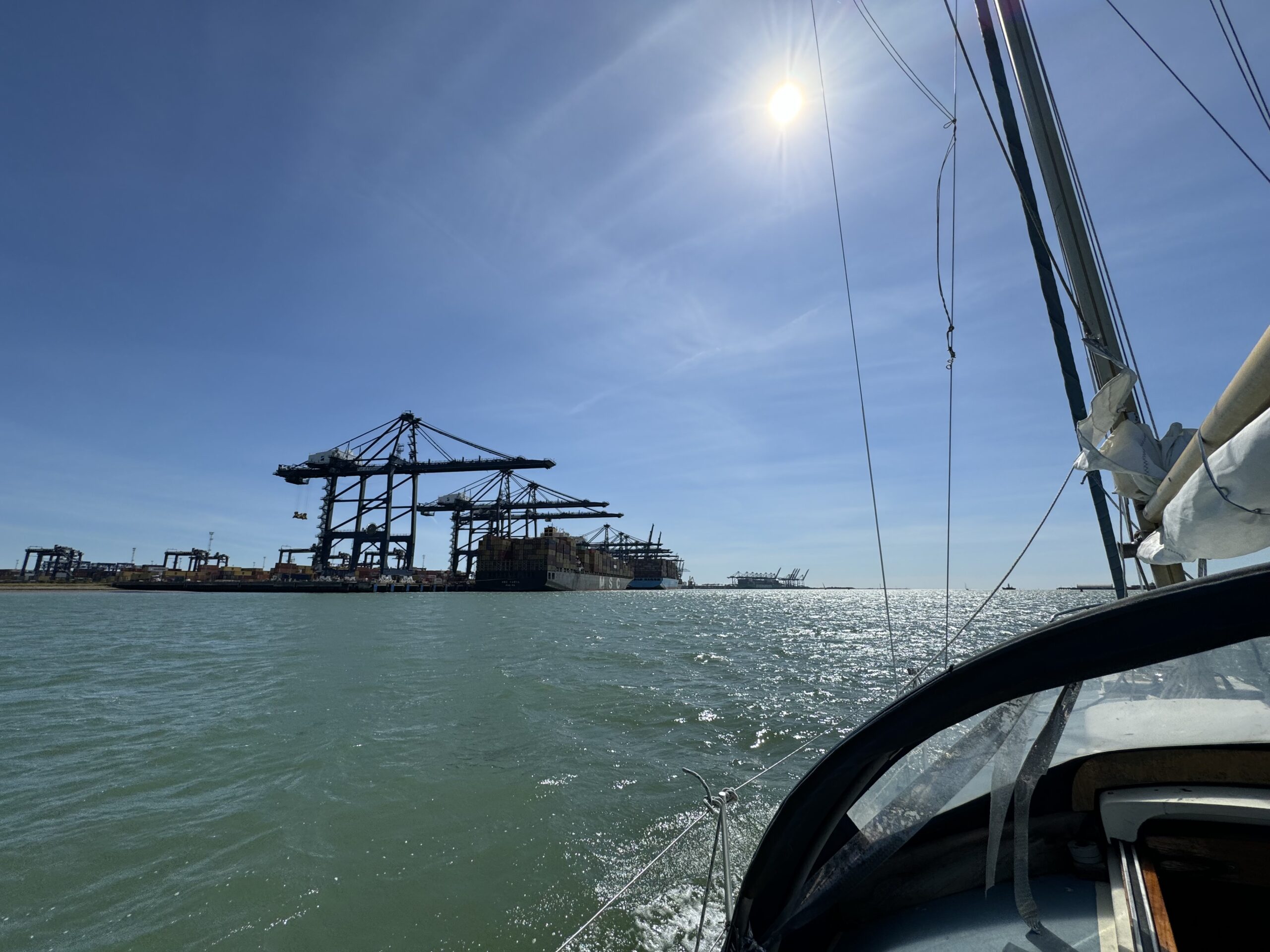The Future of the Conservative Party: A Former Supporter’s Perspective
Introduction
At the time of writing, the General Election of 2024 has just taken place. The Labour Party have gained a significant parliamentary majority, and the Conservatives have taken an absolute kicking. Yet the Labour Party’s success was largely as a result of the almost total collapse of the Conservative Party’s support base. Harold Macmillan is reputed to have commented that “oppositions don’t win elections, government’s lose them” and this would seem to be particularly the case on this occasion; the Conservative Party’s share of the vote dropped by a significant 19.9%, whilst Labour’s increased by a paltry 1.6%. Something has clearly gone very wrong for the Conservative Party, and many have suggested that this could be the end of the party. I have felt no love whatsoever towards the Conservatives in recent years, but I would be very sad to see the party die out entirely. I personally don’t believe that this is the case, but I do believe that the party is at a significant crossroads, and the road chosen at this juncture will inevitably determine whether the party is to ever hold office again.
I hope, in this rather lengthy essay, to offer my perspective on what has gone wrong for the party, and how the Conservatives could – indeed, should – move forward.
From Devotion to Detestation
As a former ardent supporter of the Conservative Party, I have had significant involvement with the party, both at grassroots level and nationally. I happened to be born on Margaret Thatcher’s first day in office – which might have shaped my political destiny. I remember meeting my local MP, George Gardiner, on several occasions as a small child, and being greatly inspired by him. (I also remember meeting John Redwood when I was a slightly larger child, and being surprised by how rude and arrogant he was, but that’s not a story for today…) My political involvement rapidly increased whilst reading History and Politics at university. During this time I launched Conservative Future at my university and served as its founding chairman, successfully growing it into the largest political group on campus, to the great shock of many, as the university I attended had a reputation for being particularly left wing.
My commitment extended beyond the university setting; I played a significant role in two parliamentary campaigns at the constituency level, working closely with a prospective parliamentary candidate (PPC). Additionally, I stood for local council on two occasions and worked nationally with the party during election campaigns. I regularly travelled to London to work at the top-secret GENEVA (General Election Voluntary Agency) cold-calling people and asking them whether they might consider voting Conservative.
Despite this history of dedication, recent years have seen my once fervent support of the party transform into outright detestation. And I don’t think that’s an exaggeration.
The Turning Point: Brexit, Boris Johnson and COVID-19
My pro-European stance and strong opposition to Brexit have been key factors in this shift. It was, in my view, a grave misjudgment on David Cameron’s part to promise a referendum in an attempt to appease the Eurosceptics within the party and to limit the damage that Nigel Farage and UKIP could cause to the Conservatives electorally in the 2015 General Election. This decision not only fractured the nation but also set the stage for subsequent turmoil. The ascension of Boris Johnson to party leadership only compounded my disillusionment. Johnson, in my opinion, was fundamentally unsuited to high office. His tenure was marred by numerous scandals, including the infamous partygate, where lockdown-breaking parties at Downing Street during COVID-19 restrictions exemplified his disregard for the rules he imposed on the nation. Furthermore, his systematic elimination of some of the most capable members of the party in favour of promoting friends who were profoundly unsuitable further eroded my confidence. Notable examples include the sidelining of seasoned politicians like David Gauke and Rory Stewart, who were replaced by the likes of Dominic Cummings and Gavin Williamson, figures whose tenures were marked by controversy and incompetence.
The Conservative government’s handling of the COVID-19 pandemic also contributed significantly to my disillusionment. The poor provision of personal protective equipment (PPE) to medics on the front line, including my wife, a consultant in a major accident and emergency department, was appalling. The establishment of a VIP lane, which ensured that friends and associates of the government were paid over the odds for useless PPE, further highlighted the corruption and incompetence within the party. Figures like Baroness Michelle Mone benefited to the tune of hundreds of millions of pounds of taxpayers’ money, while frontline workers were left unprotected and vulnerable. This scandal exemplifies the party’s prioritisation of cronyism over public service.
The Truss Catastrophe
The brief yet disastrous leadership of Liz Truss further exacerbated my frustrations. Her tenure saw the economy crash following her “mini-budget,” which included unfunded tax cuts that spooked financial markets and led to a dramatic rise in borrowing costs. The pound plummeted to historic lows, and the Bank of England was forced to intervene to stabilise the situation. This period of economic mismanagement highlighted a troubling trend within the party towards more extreme right-wing policies that prioritise ideology over practical governance.
Scandals and Corruption: A Party Unfit to Govern
Over the last few years, the Conservative Party has been rocked by numerous scandals, each highlighting its unfitness to govern. The Owen Paterson affair, where the government attempted to rewrite parliamentary standards to protect an MP found guilty of breaching lobbying rules, showcased blatant disregard for ethical governance. Additionally, the Greensill scandal, involving former Prime Minister David Cameron’s lobbying on behalf of a financial services company, exposed the deep-rooted cronyism within the party.
The previously-mentioned partygate scandal, where senior officials, including Boris Johnson, were found to have attended social gatherings in violation of lockdown rules, further eroded public trust. The handling of the HS2 project, marked by delays and ballooning costs, demonstrated incompetence in managing large infrastructure projects. The housing scandal involving Robert Jenrick, who unlawfully approved a housing development for a Tory donor, highlighted how personal interests were prioritised over the public good.
Ethical scandals have also marred the party. For instance, Conservative MP Rob Roberts faced suspension after being found to have sexually harassed a member of staff, and MP Charlie Elphicke was jailed for sexual assault. Additionally, Matt Hancock, the former Health Secretary, resigned after breaching social distancing guidelines by having an affair with an aide, further highlighting the party’s moral failures.
The Right-Wing Shift: Braverman and Patel
Figures like Suella Braverman and Priti Patel have played influential roles in pushing the party further to the right. Their hardline stances on immigration and asylum policies, exemplified by Patel’s controversial Rwanda deportation plan, demonstrate a complete lack of compassion that is antithetical to the values I believe should underpin the Conservative Party. The recent electoral defeat, which I view as a deserved rebuke, underscores the urgent need for reflection and change within the party.
The Election Night Evisceration
Despite having been a loyal Conservative for most of my life, it gave me great pleasure seeing the party being eviscerated on election night. Witnessing figures like Liz Truss and Jacob Rees-Mogg lose their seats was particularly gratifying. Their policies and actions have, in my view, significantly damaged the party’s reputation and strayed far from its founding principles.
The Crossroads: Choosing the Future Path
The Conservative Party now stands at a critical crossroads. This juncture could either mark the beginning of a return to moderate, compassionate conservatism or further descent into right-wing extremism. A choice of moderate leadership, embracing the one-nation Toryism that once characterised the party, could see me return to the fold. Such a shift would align with my belief in a balanced, empathetic approach to governance and policy-making. Leaders like Jeremy Hunt, who advocate for pragmatic policies and fiscal responsibility, could restore my faith in the party’s direction.
Victoria Atkins, a prominent figure within the party, represents a potential leader who could steer the Conservatives back to their one-nation roots. As the daughter of former Conservative MP Robert Atkins, she has a strong political pedigree and has served in various ministerial roles, including as Minister of State for Prisons and Probation. Her approach to politics has often emphasised compassion, justice, and effective governance, making her a candidate who could rebuild the party along traditional, moderate lines. Atkins’ leadership could appeal to those of us who long for a return to a more inclusive and principled Conservative Party.
However, the likelihood of Atkins succeeding Rishi Sunak and leading the party in this direction seems slim. The Conservative Party membership, who enthusiastically backed Liz Truss in her leadership bid, demonstrated a preference for more extreme right-wing policies. Truss won the leadership contest with a significant majority, securing 57.4% of the vote against Rishi Sunak’s 42.6%. This overwhelming support for Truss reflects a broader trend within the party’s base that may resist the moderation and inclusivity that someone like Atkins would bring. Instead, the membership is more likely to support figures such as Suella Braverman or Kemi Badenoch, who advocate for staunchly conservative, right-wing policies that resonate more deeply with the current ideological leanings of the party’s grassroots. Braverman’s hardline immigration policies and Badenoch’s vocal opposition to “woke” culture and progressive social policies have made them favourites among the more conservative elements of the party.
Bringing People Together: The Path to Consensus
To succeed, the Conservative Party needs to bring people together and build consensus, firstly within the party itself and then within the country. In recent years, the party has focused more on sowing division and distrust, adopting a divide and conquer strategy. This approach has played out in various ways, from the rhetoric surrounding Brexit, which often pitted different regions and demographics against each other, to the handling of immigration, where inflammatory language has been used to stoke fear and division.
For instance, the government’s hardline stance on immigration has often portrayed immigrants as a threat, creating an atmosphere of hostility and fear. Similarly, the party’s approach to Brexit frequently involved demonising the European Union and presenting the situation as a battle between patriotic Britons and malevolent foreigners. This divisive rhetoric has not only deepened societal rifts but also alienated many moderate voters who yearn for a more inclusive and collaborative approach to governance.
Bringing people together requires a shift in strategy. The party must engage in genuine dialogue, listen to diverse viewpoints, and seek common ground. Within the party, this means fostering an environment where different factions can coexist and collaborate towards shared goals. Nationally, it involves promoting policies that unite rather than divide, emphasising common interests and shared values.
The Need for Radical Thinking
To be successful, the party needs to be radical in its thinking. It must confront the issues affecting our society head-on, beginning with the political system itself. The first-past-the-post voting system is no longer fit for purpose. Countries like Germany and New Zealand have moved away from this system in favour of proportional representation, which more accurately reflects the will of the electorate and ensures that all votes carry equal weight. Britain needs to adopt proportional representation to create a fairer and more inclusive political landscape.
The physical infrastructure of our political institutions also needs modernisation. The Houses of Parliament, while historically significant, are outdated and ill-suited to the needs of a 21st-century democracy. Transforming them into a museum and constructing a new, state-of-the-art parliament building would symbolise a commitment to progress and renewal. Additionally, the House of Lords, an unelected and archaic institution, should be replaced with a less antiquated second chamber that better represents the diversity and dynamism of contemporary Britain.
The taxation system also requires a complete overhaul. The current system is convoluted and often perceived as unfair. By ripping it up and introducing a new, more equitable system, the party could address the growing disparities in wealth and ensure that everyone pays their fair share. Radical thinking needs to extend to the NHS, social care, and prisons as well. The NHS, while a cherished institution, faces significant challenges that require innovative solutions and sustainable funding models. Social care must be integrated with health services to provide seamless support for the elderly and vulnerable, and the prison system needs reform to focus on rehabilitation and reducing reoffending rates.
The party also needs an approach to business that will fire up the economy, beginning with gaining access to the market right on our doorstep: Europe. Re-establishing strong economic ties with the European Union would provide British businesses with the stability and opportunities they need to thrive. This would not only boost the economy but also help heal the divisions caused by Brexit.
Reclaiming the Centre Ground
The future of the Conservative Party hinges on its ability to reclaim the centre ground. Demonstrating both compassion and competence is not only the right course of action but also the only viable path to regaining public trust and electoral success. My concern, however, remains that the party will capitulate to the demands of the far-right, distancing itself further from the mainstream of British politics. The choices made in the coming months will determine not only the party’s direction but also whether it retains supporters like myself, who yearn for a return to a more inclusive and moderate conservatism.
For the good of the country, it is essential that the Conservative Party successfully rebuilds itself. The presence of a strong opposition is vital for a functioning democracy, ensuring that the government remains accountable and that diverse perspectives are represented in the policymaking process. A reinvigorated Conservative Party, guided by principles of compassion and competence, can play a crucial role in maintaining the balance necessary for a healthy democratic system.
Conclusion: A Path Forward
In conclusion, the Conservative Party stands at a pivotal moment. Its decision to either embrace a moderate, compassionate future or continue its drift towards right-wing extremism will determine its relevance and success in the coming years. As a former supporter, my hope is that the party will choose a path that prioritises the needs of the country and its most vulnerable citizens, fostering an environment where ethical governance and inclusive policies can thrive. Only then will the Conservative Party regain the trust and support of those who, like myself, long for a return to its principled and compassionate roots.
If the party adopts a platform that places the needs of the country before its own interests and looks to protect the most vulnerable in society, I would gladly consider rejoining and playing an active role. This would mean embracing policies that support public services, address income inequality, and offer compassionate solutions to social issues such as immigration and homelessness. A commitment to ethical governance and a rejection of self-serving political manoeuvres are crucial. I envision a Conservative Party that not only seeks electoral success but also strives to improve the lives of all citizens, particularly the most disadvantaged. Such a party would resonate with my core values and principles, compelling me and many others like me, traditional Conservative voters who have felt disenfranchised for the last two elections and opted to support other parties, to willingly return to the fold.
However, I would never consider rejoining a party that continues its current trajectory, marked by right-wing, sociopathic beliefs and actions. The continued influence of figures like Braverman and Patel, along with the party’s flirtation with populist rhetoric akin to that of Nigel Farage, represents a stark departure from the inclusive, compassionate conservatism that once defined the party. The embrace of divisive policies and the marginalisation of moderate voices create an environment that is increasingly hostile to those who advocate for a more centrist and humane approach to politics.
The Conservative Party should remain confident about its nature and not seek to pander to Reform UK and its supporters, despite the damage done to them by Reform UK in the recent elections. Aligning with such extremist elements would only further alienate moderate voices and undermine the party’s long-term viability.
Ultimately, the future of the Conservative Party hinges on its ability to reclaim the centre ground. Demonstrating both compassion and competence is not only the right course of action but also the only viable path to regaining public trust and electoral success. The choices made in the coming months will determine not only the party’s direction but also whether it retains supporters like myself, who yearn for a return to a more inclusive and moderate conservatism. This is the challenge that lies ahead for the Conservative Party, and its response will define its place in British politics for years to come.


































Leave a Comment